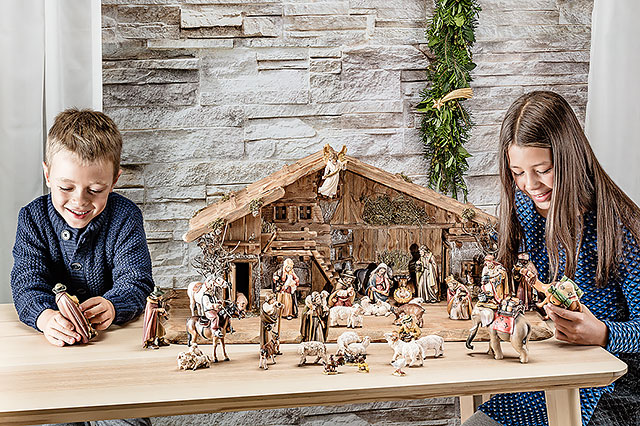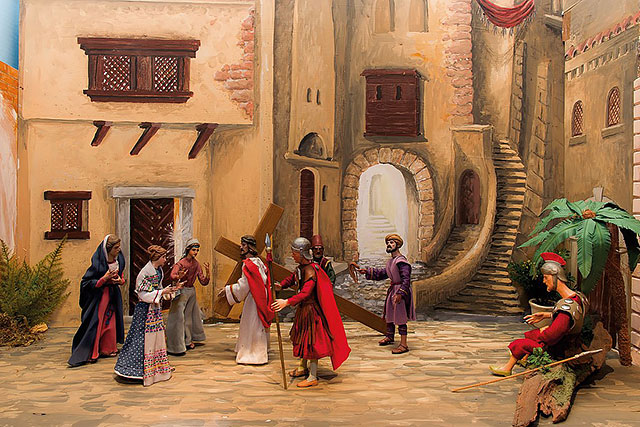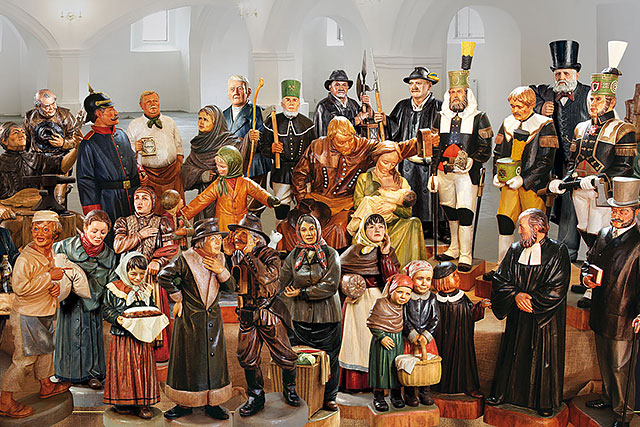A crib without ox and donkey would be incomplete: the two animals, together with the main characters Mary, Joseph and the baby Jesus, simply belong to a traditional crib. But how did the ox and donkey, which are among the oldest Christian motifs, enter the stable? And what is the meaning of the other animals in the stable?
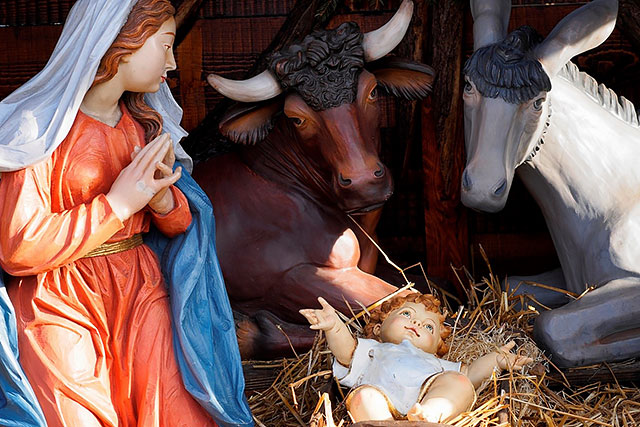
Table of contents
When do the ox and the donkey appear in depictions of the birth of Jesus?
The ox and the donkey have been an indispensable part of pictorial representations of the birth of Jesus since the time of early Christianity. In addition to the nativity figures also appear in medieval frescoes or in church windows from the 4th century onwards - before then, the Roman oppression of Christians left no chance for Christmas art or the christian symbols such as the donkey and the ox.
However: the animals that witnessed the birth of Jesus do not appear in the Bible. In the Gospel of Luke, which tells us the story of Christmas, there is only mention of a crib stable and a manger in which the newborn baby is placed, but not animals.
What is the importance of the ox and the donkey in the stable?
Some historians believe that the ox and the donkey in the hut refer to the Old Testament. From the verse of the prophet Isaiah.
"The ox knows its owner and the donkey its master's manger; Israel has no knowledge, my people have no understanding" (Isa 1: 2-3).
This sentence means: animals know where they belong. You are smarter than you might think. Take them as an example. At that time, the ox and the donkey were very important, as they served as a livelihood and were indispensable tools for field work. The animals in the hut, the ox and the donkey, are very close to the message of the Incarnation of God. The shepherds and the The three wise Kings will come later.
This interpretation is also supported by the representation on the sarcophagus of the city gate in the Church of Sant'Ambrogio in Milan (made around 380-400 AD) - also known as the 'Sarcophagus of Stilicho'. Here Jesus lies all alone in the manger, without Mary and Joseph - only flanked by an ox and a donkey. And in the apocryphal infancy gospel of Pseudo-Matthew it says: "On the third day of the birth of our Lord Jesus Christ, the blessed virgin came out of the cave, went into the stable, and laid her boy, whom the ox and the ass worshipped, in a manger Even the animals, ox and ass, among whom he lay, worshipped him unceasingly".
Furthermore, a verse from the book of the Habakuk prophets refers to the two animals in the stable. The Greek translation reads: "Lord, I heard your news and was in awe, Lord, I looked at your works and was impressed. You are acknowledged in the midst of two living creatures ..." (Habakuk 3: 2). According to the Christian conception, the donkey at the manger represents the pagans, the ox the Jews.
Which animals are still in the stable
Besides the ox and the donkey, we often discover other animals in the stable, for example sheep and lambs, dogs but also camels, elephants and horses. What do these mean?
Sheep and lambs
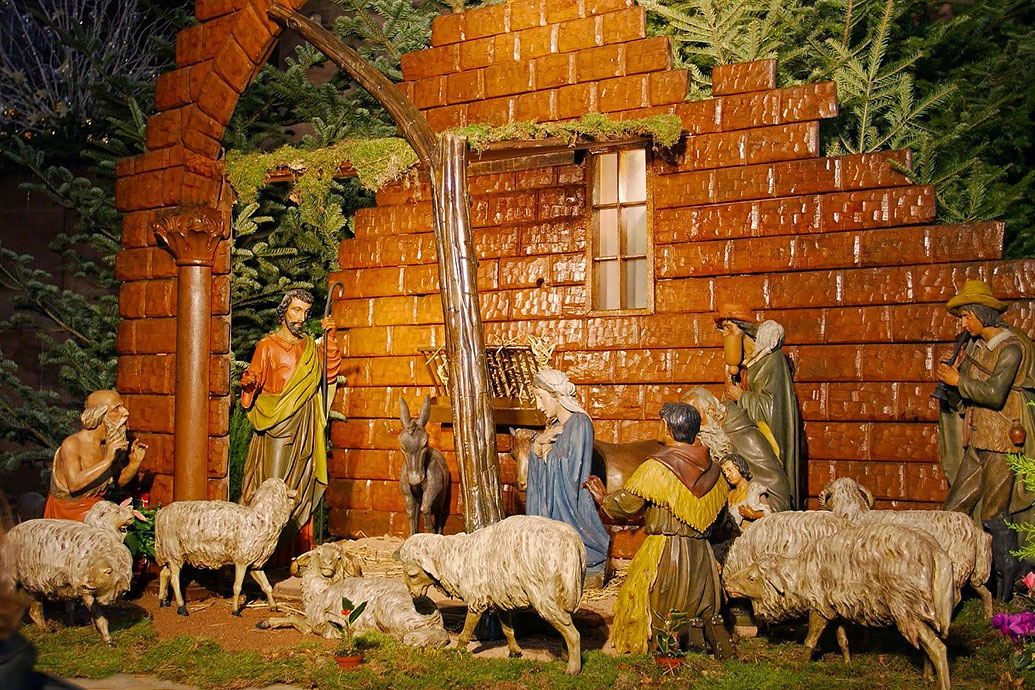 The shepherds came with their flocks of sheep to the stable to witness the birth of Jesus.
The shepherds came with their flocks of sheep to the stable to witness the birth of Jesus.Sheep are the animals most often mentioned in the Bible. At that time they were not considered stupid animals but useful. In both the Old and New Testaments there are numerous references to sheep or lambs. While the Old Testament deals with the sacrificial lamb, the New Testament symbolises sheep for the misguided man who is brought back to the right path by the shepherd Jesus.
Shepherds and their 'flocks' are also mentioned in the Christmas story according to Luke. They were the shepherds, the first to hear the good news of Jesus birth through an angel. They hurried to the stable, together with the animals for which they were responsible. In the Bible it says:
"In that region the shepherds camped in the open field and kept watch over their flock at night. The angel of the Lord approached, and the glory of the Lord shone around them". (LK 2,8-12)
Even if the sheep are only marginal figures in the Christmas crib, they still help to bring the Christmas story closer to people.
Sheepdogs
In many cases, a dog also joins the crowd of animals in the hut. It is the dog of the flock of sheep and the shepherd and is a symbol of vigilance and protection. In some nativity scenes there are often many other animal figures. This shows that at Christmas the whole of God's creation is considered, not only the human world but also the animal world.
Camel, elephant and horse
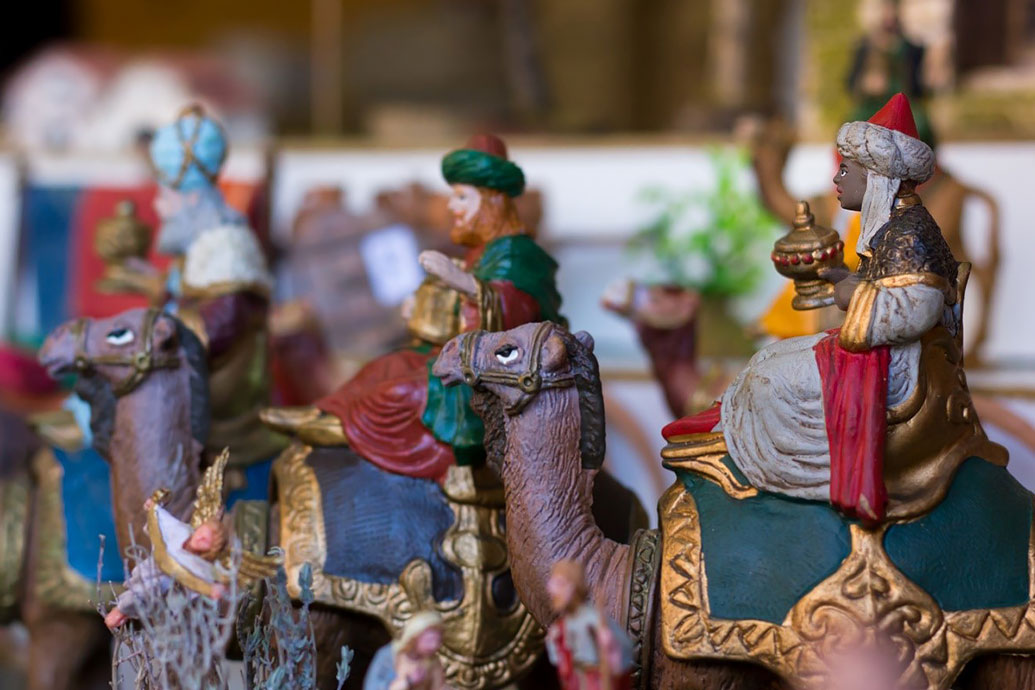 From Epiphany onwards, exotic animals such as camels also enrich the crib.
From Epiphany onwards, exotic animals such as camels also enrich the crib.Besides the ox and the donkey, the sheep and lambs and the sheepdog, in some nativity scenes one can also see exotic animals, such as an elephant and a camel and at least one horse. The three saddle animals belonged to the three wise men from the East. They represented the continents known at the time: the elephant, which is usually placed next to the dark-skinned King Gaspar, represents the African continent; King Balthazar rides on a camel as a representative of Asia and Melchior rides a horse as a representative of Europe.
Elephants and camels are elaborately designed nativity figures, but they can only enrich the nativity scene at Epiphany.
Ox and donkey - an integral part of every nativity scene
The figures of the Nativity leave a lot of room for interpretation. This also applies to the animals, which are an essential part of every Christmas crib. In our magazine you will find further informative articles on nativity scene figurines, for example on how to properly place nativity figures or their meaning. We will also explain the history if the nativity scene. Feel free to browse our wide selection of handicrafts nativity figures and Christmas Nativity sets in our online shop.
Credits: main image: ©gettyimages/EnkiPhoto, image 1: ©gettyimages/slowmotiongli, image 2: ©gettyimages/JosuOzkaritz

